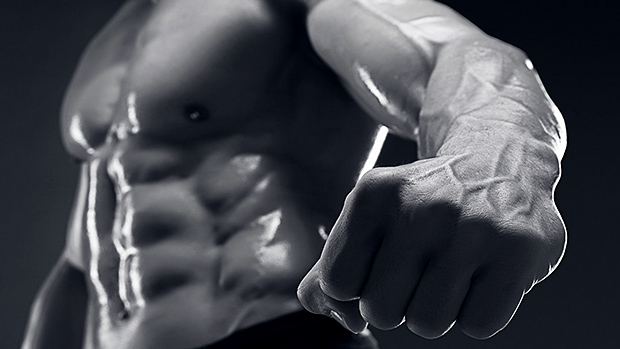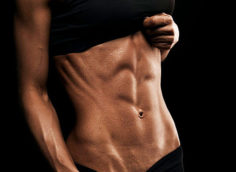When it comes to biceps training, we all love our 21's, our drop sets, running the rack, and various other schemes that add metabolic stress or act as time-efficient finishers. They can get stale, though, so let's breathe a little life into your workouts with these intelligent and basic (yet not boring) biceps protocols.
Let's "slow cook" your biceps, as well as the brachioradialis, via a lot of rotation and change in hand position. The protocol:
- Dumbbell Reverse Curl: 6-8 reps with an estimated 12-rep max weight
- Dumbbell Hammer Curl: 6-8 reps (same weight)
- Dumbbell Curl: 6-8 reps (same weight)
- Dumbbell Cheat Curl: 6-8 reps (same weight)
- 90-Degree Alternating Pronation/Supination: 6-8 reps (after last cheat rep)
- 90-Degree Isometric Hold: Hold for as long as possible (after last supination and pronation)
You'll use the same weight throughout and there's no rest between the variations. Rest 90-120 seconds and repeat. You'll likely have to drop down a set of 'bells to do a second series.
You'll need to leave your ego at the door. This protocol is straight-up metabolic stress, skin-splitting pump work! If you need to use 15-20 pound dumbbells, then so be it. Now isn't the time to try and impress the Gym Shark girl next to you with huge weights.
The weight selection on that first exercise is key. You want to have several reps in reserve. If you go too heavy on the reverse curl and get too close to failure, you won't last and won't hit the rep targets on the movements that follow. Trust me, by the third or fourth movement, it'll get plenty hard.
A quick note on the cheat curl – you want to hip hinge just a little and "pop" up powerfully. Pause the contraction and then do a very slow and focused negative.
This is a straightforward mechanical advantage drop set. We start with the theoretical weakest exercise and then manipulate leverage and strength curve to pour on more volume and extend the set. The protocol:
- Bent Over EZ-Bar Spider(ish) Curl: 8-12 reps (to failure)
- Strict EZ-Bar Curl with Shoulder Flexion: Max reps (same weight)
- Strict EZ-Bar Curl: Max reps (same weight)
- Cheat EZ-Bar Curl: Max reps (same weight)
Do the first variation using weight you can lift for 8-12 reps. From there out, go for maximum reps, always using the same weight. Rest 90-120 seconds and repeat.
You'll likely need to reduce the weight a bit to do a second round. Again, this is metabolic stress work – you won't need a lot of load and you should only do 2 sets, tops. Apply the same guidelines on the cheat curl as laid out above: a little hip hinge and pop up forcefully. Pause the contraction and use a very controlled negative.
Here's an alternative version that uses an EZ-bar cable attachment and a low pulley.
This is another straightforward and effective mechanical advantage drop set. With this one, you'll start face down but spin around on the subsequent set, finally ending up standing, hitting both the long and short heads of the biceps hard in the process:
- Dumbbell Spider Curl: 8-12 reps (to failure)
- Incline Dumbbell Curl: Max reps (same weight, same incline)
- Strict Standing Dumbbell Curl: Max reps (same weight)
- Standing Cheat Dumbbell Curl: Max reps (same weight)
- 90-Degree Isometric Hold: Max time (after last cheat rep)
Do the first variation using a weight you can lift for 8-12 reps. Then go for maximum reps on the exercise variations that follow. The same guidelines apply here in terms of rest periods, sets, and load reduction.
Regardless of your training split, use these biceps variations mid to late workout – after your heavier, straight-set progressive overload work.
There are no hard and fast rules here. Remember, this is metabolic stress and muscle damage work. These aren't protocols where you're chasing weight or personal records. It's all about tension, volume, and mind-muscle connection.
Go after mechanical tension, maximizing load, and progression earlier in the workout using other exercises. These are not entrees; they're side dishes.
You can certainly thrive by hammering basic stuff over and over for years, but isn't training supposed to be fun? And who doesn't like to pump up their arms? The protocols presented here are a way to make your training "flexibly structured," quench your bro thirst, and implement some smart variety.
There's nothing wrong with leaving the gym with a pump and a smile and chomping at the bit to come back for more.




